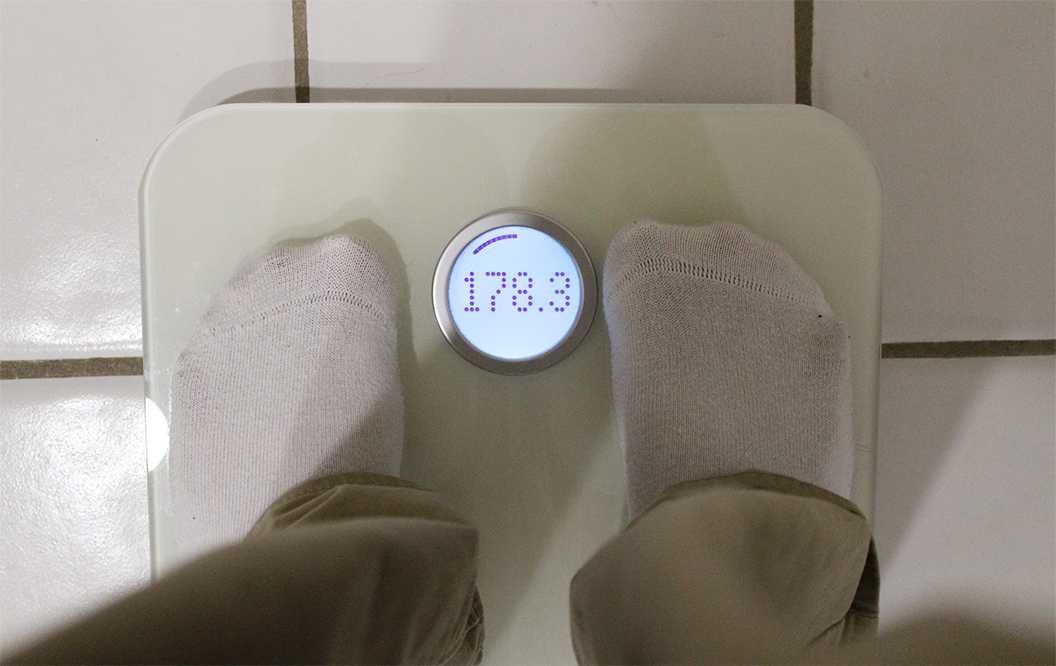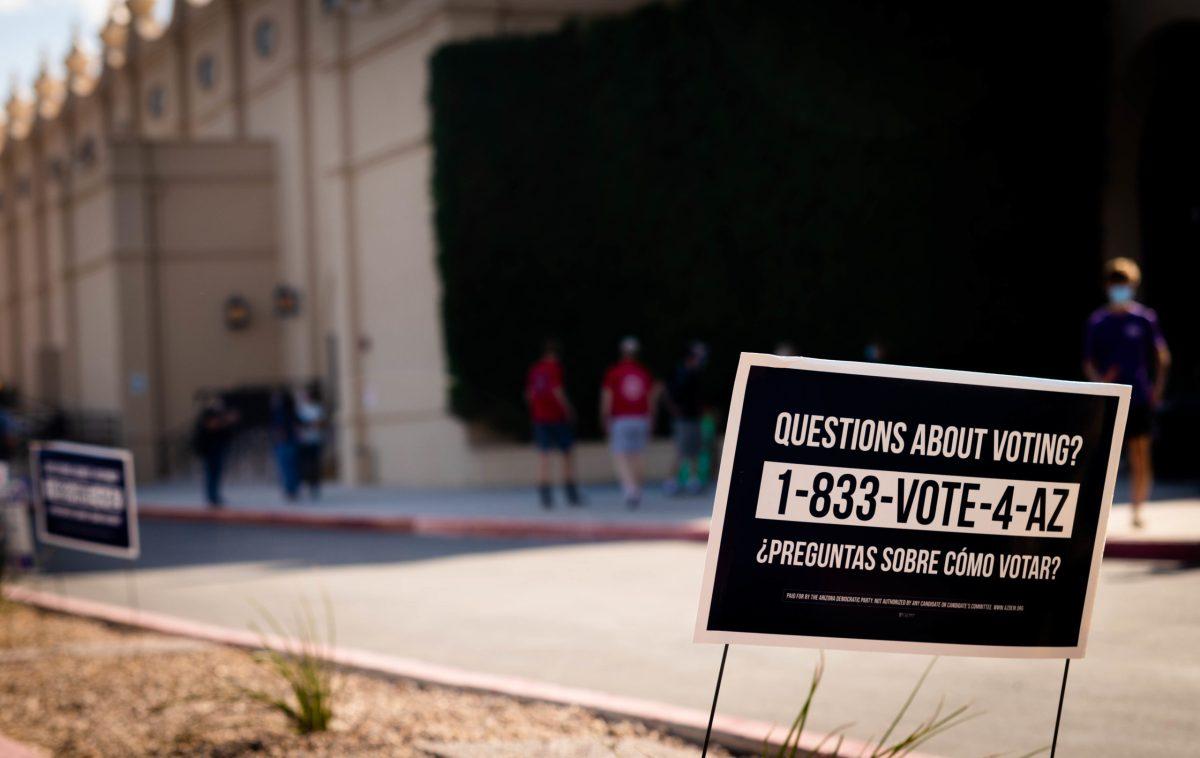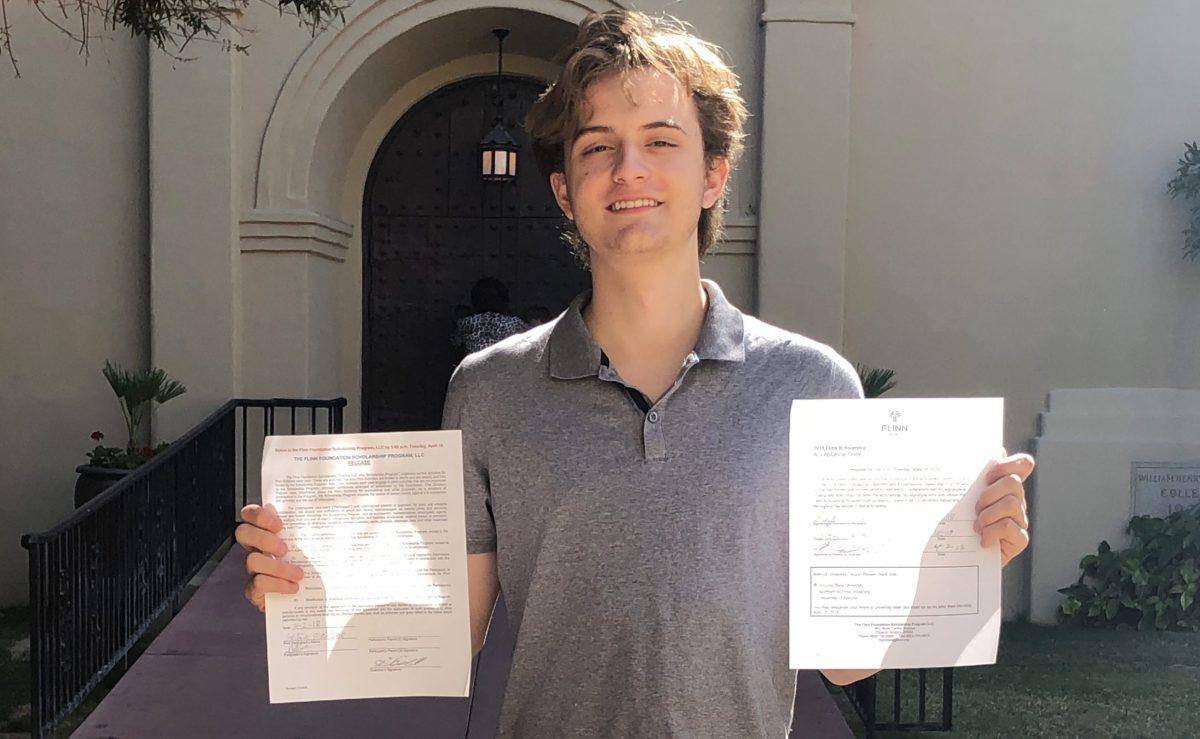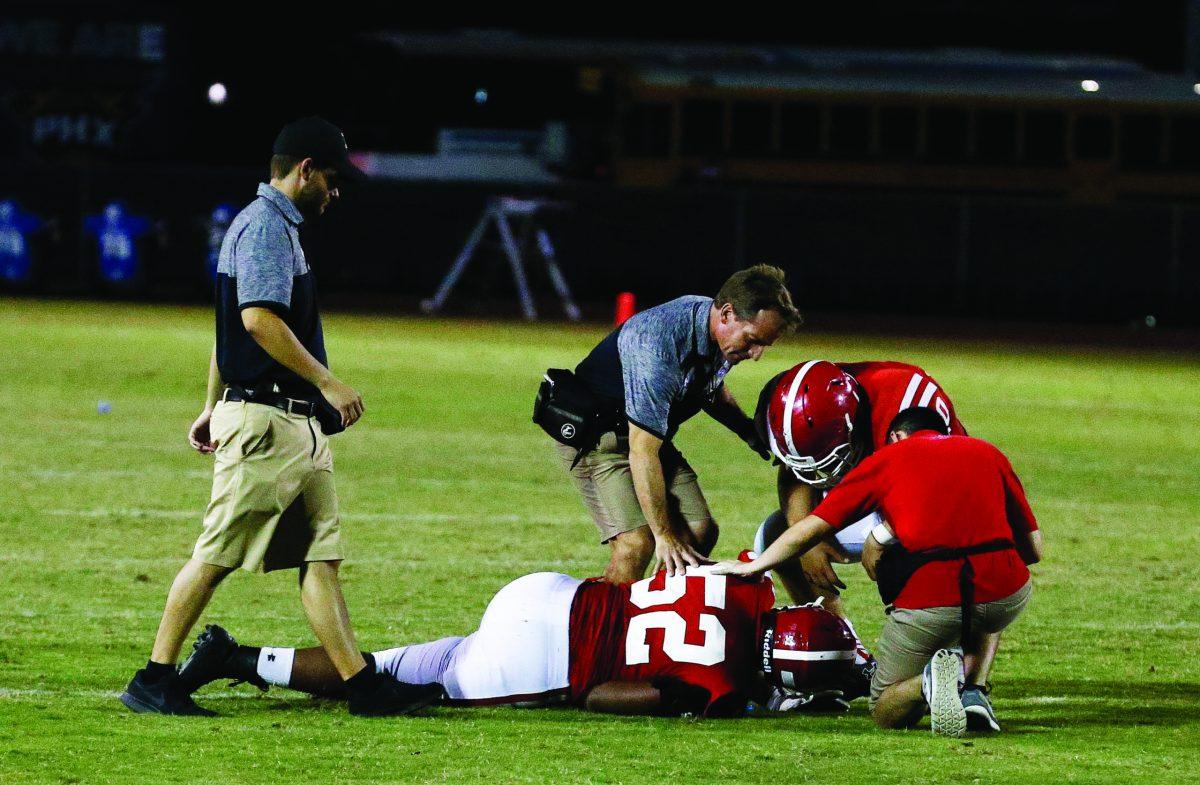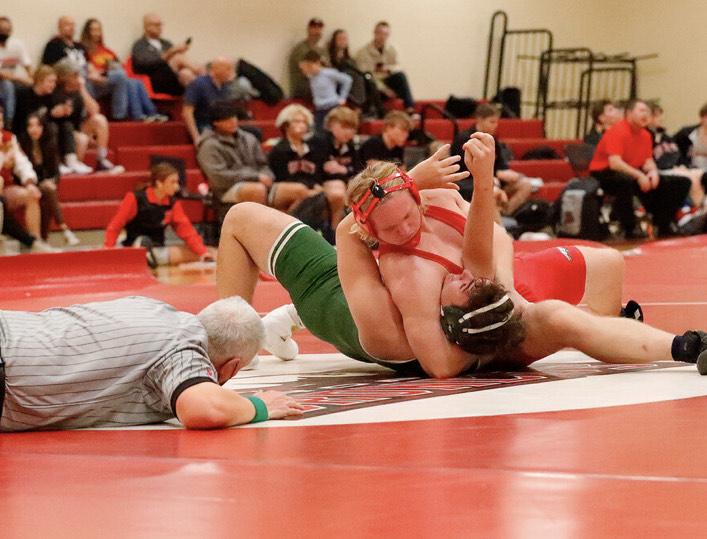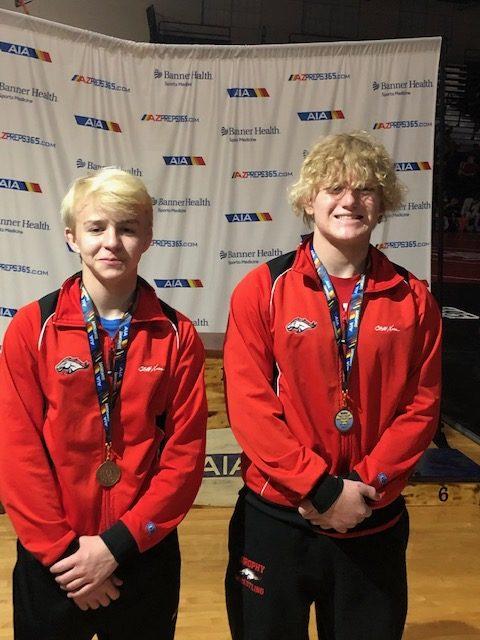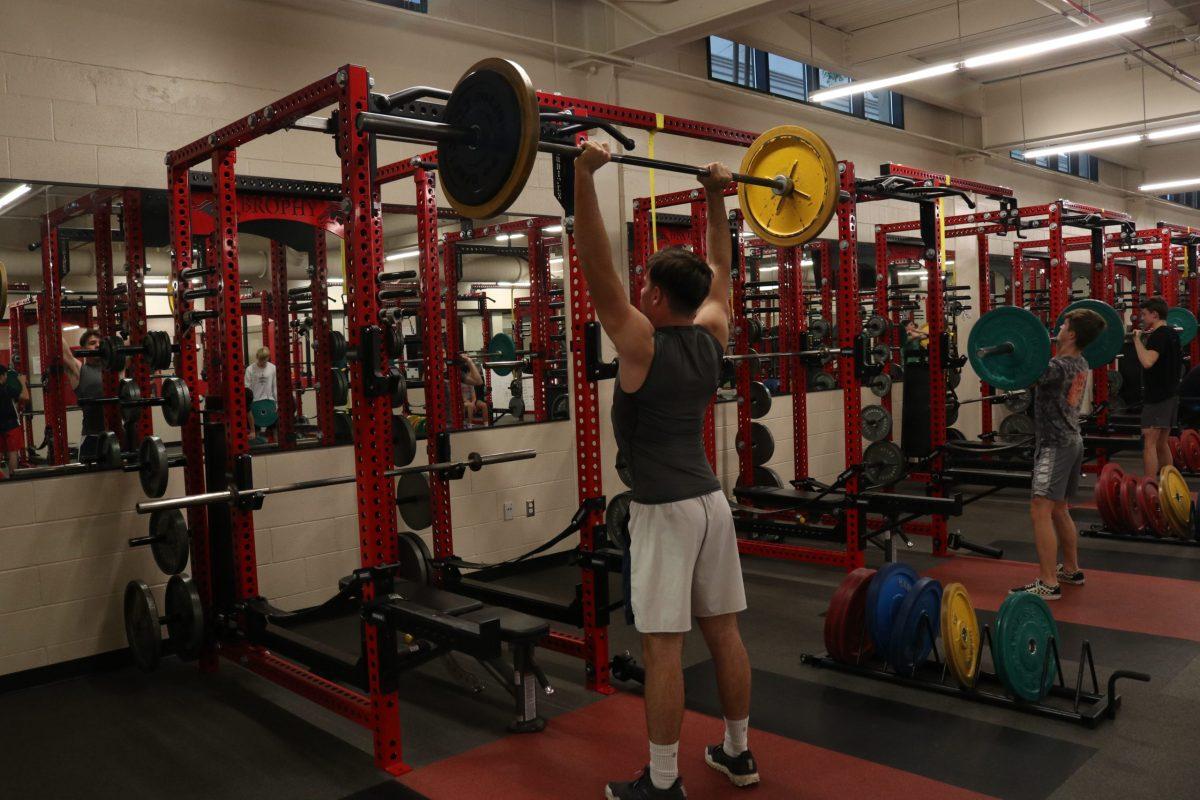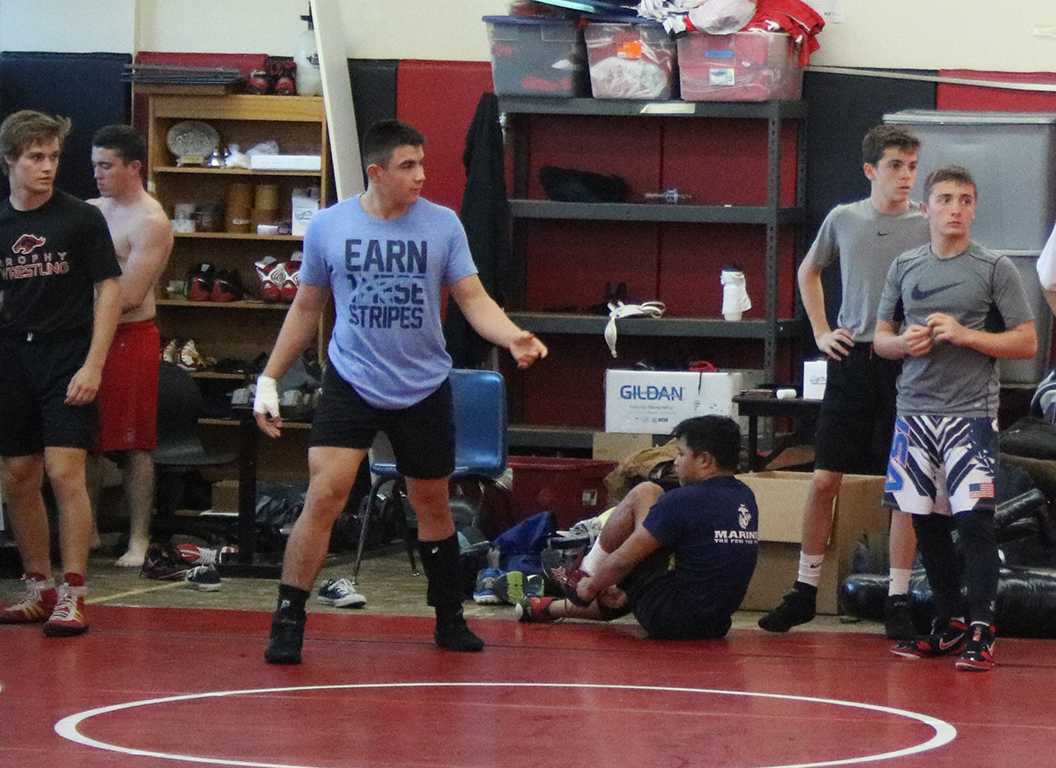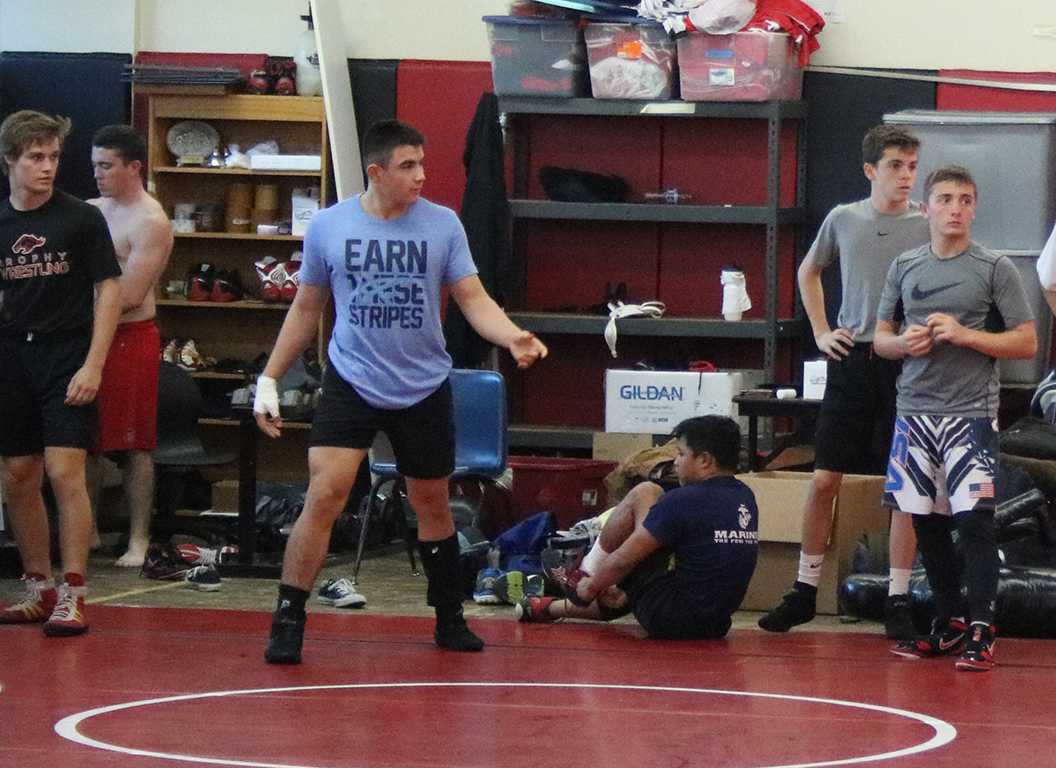Photo by Cory Wyman ’16 – Cutting weight solely for the purpose of being put into a lower weight category is discouraged by the wrestling program.
By Andrew Howard ’17
THE ROUNDUP
Brophy has a zero tolerance policy on cutting weight, a practice that has often been used in wrestling to try to gain an advantage before a match.
Wrestlers who “cut weight,” or lose weight rapidly by not eating, not drinking enough water, sweating, spitting and a variety of techniques, do so in order to qualify to wrestle in a lower weight category.
In 1997, three collegiate wrestlers died in a span of six weeks from cutting too much weight, which caused many issues in the wrestling world.
“It was a wakeup call to the whole wrestling community, and we’ve embraced the fact you don’t have to cut weight,” said head wrestling coach Mr. Wayne Catan.
There began to be changes in the rules regarding weight-cutting after these deaths, but cutting weight is still a major problem in the sport.
Even as recently as Dec. 11, Mixed Martial Art fighter Yang Jian Bing died from an extreme weight cutting exercise.
Despite cutting being a common practice in wrestling, Brophy, and high school wrestling as a whole are doing everything they can to prevent injury for the athletes.
“We are not weight cutters,” Mr. Catan said. “You eat right and train right and you will find your optimal weight.”
New rules in high school wrestling have moved weigh-ins to one hour before matches instead of five hours before, giving wrestlers no time to rehydrate or gain weight back.
An Arizona Interscholastic Association rule says wrestlers must have at least 7 percent body fat going into their first match, and they cannot lose 1.5 percent of their weight in a week.
“You can’t cut weight, you can’t rehydrate … you’ll lose every match,” Mr. Catan said. “It sets a barrier for people to not cut weight and I think that’s a smart move.”
Mr. Catan, who wrestled in college, said that things were not done right back then, and that the changes are an improvement to wrestling.
Some Brophy athletes will go on to wrestle in college and the National Collegiate Athletic Association also has specific rules when it comes to cutting weight.
Wrestlers can only weigh five percent above their desired weight before a weigh in, and cannot lose more than that five percent in order to wrestle.
“Applying sound and consistent sports nutrition strategies to training programs would result in optimal body compositions, greater power and strength, and likely fewer illnesses and injuries over the course of an entire season,” according to the NCAA website.
According to livestrong.com, cutting weight can lead to long term health problems such as poor eating habits, organ damage and eating disorders.
Though weight cutting is not as serious at the high school level, MMA fighters use drastic measures to cut weight. One fighter even sat on the top level of a sauna with a heat suit on in order to drop the appropriate amount of weight, according to ESPN.com.
Michael Grindey ’17 said he was afraid that he would have to cut weight this year to wrestle in his class.
“I talked to him (Mr. Catan) in the beginning of the year saying I didn’t want to cut weight and he was totally on the same page as me,” Grindey said. “He actually encourages wrestlers not to cut weight and to just gain weight and wrestle at their current weight.”
Grindey said he doesn’t want to cut weight because of his long term health.
“I don’t cut weight because I just want to become stronger and I know when I get older that if I cut weight I will be really scrawny,” he said.









